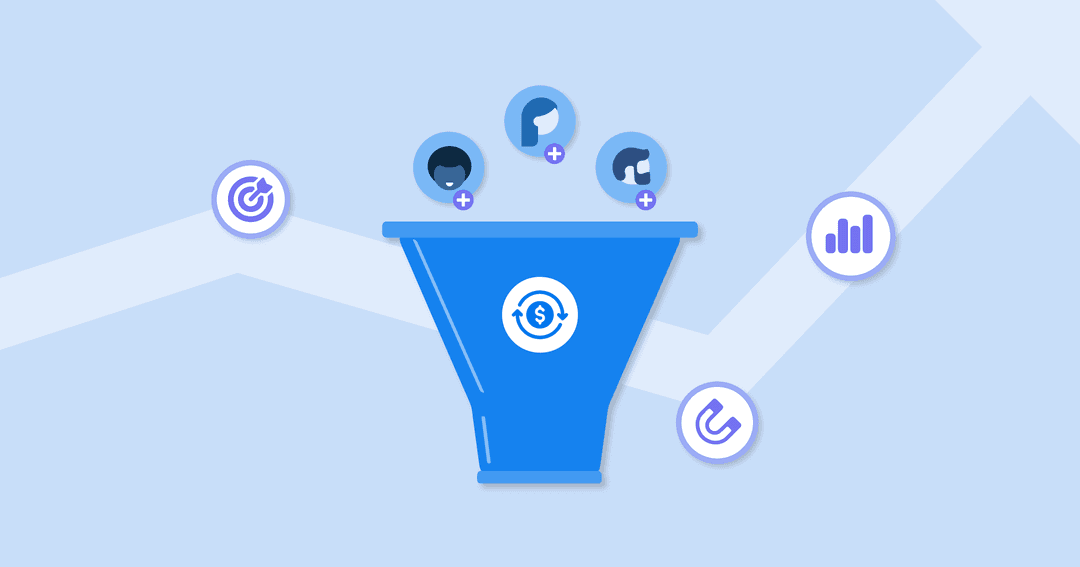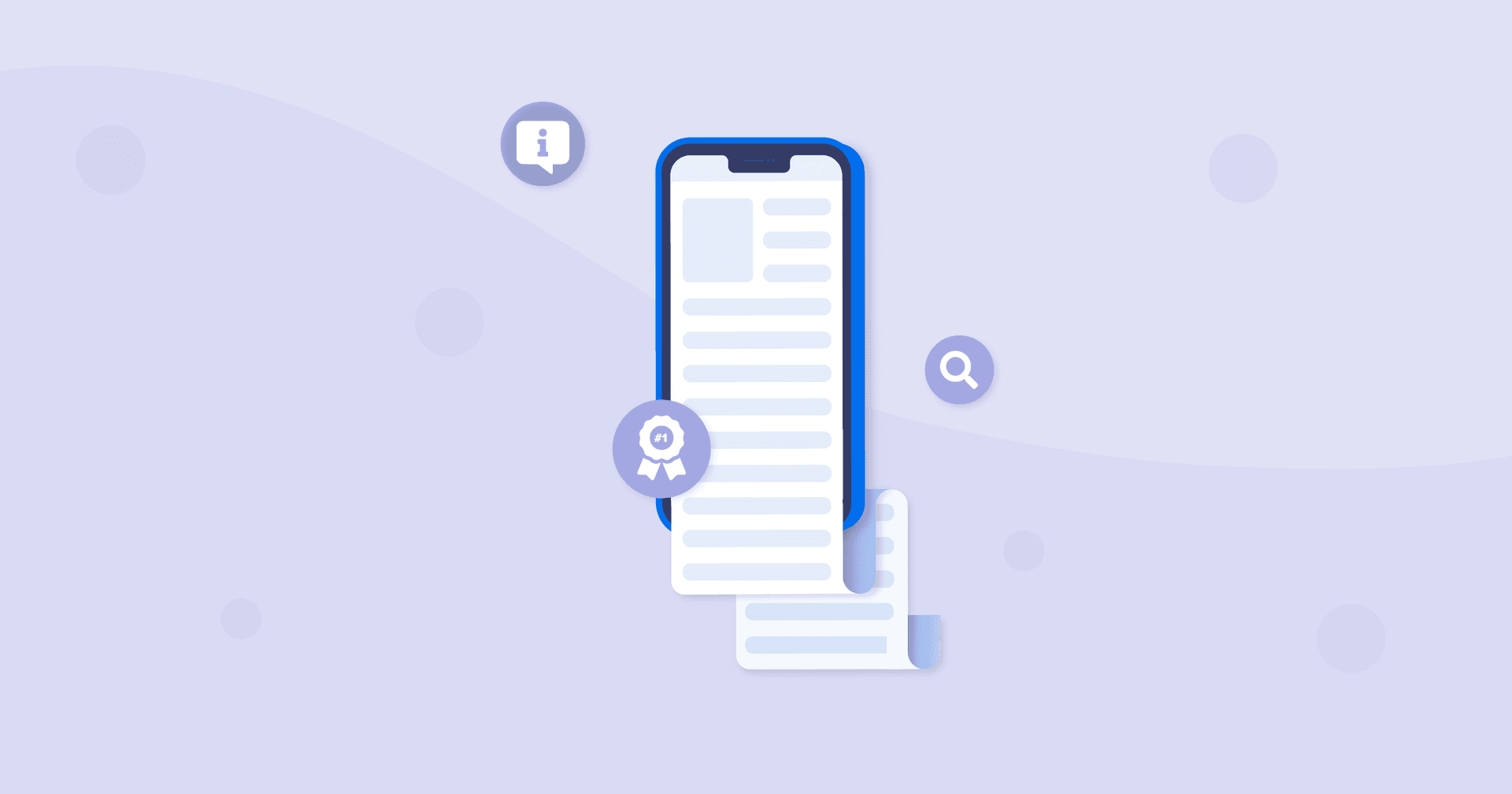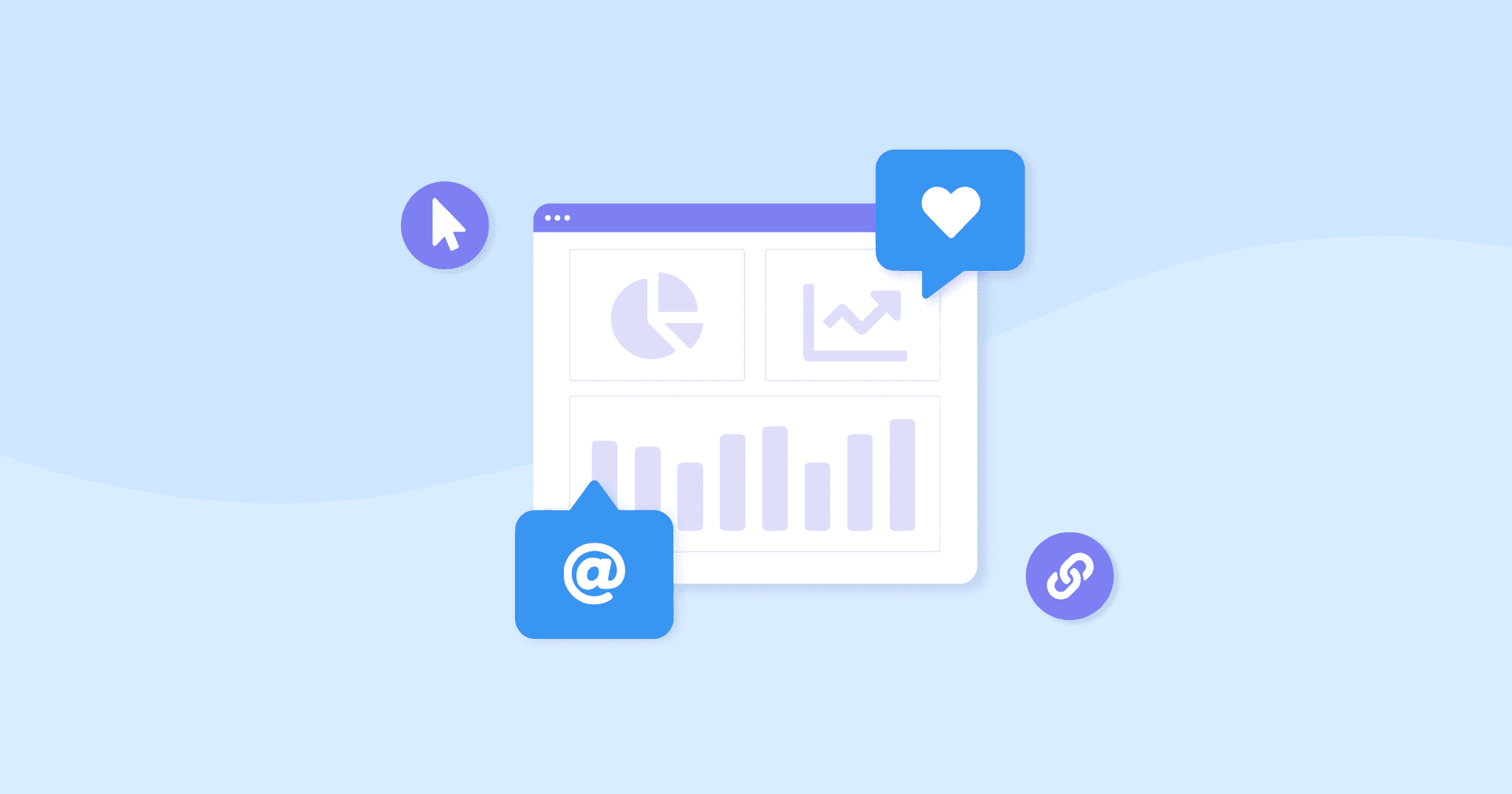Table of Contents
QUICK SUMMARY:
Client acquisition cost is the total expense incurred to acquire a new client, including marketing and sales expenditures. Lowering this cost increases agency profits and growth. This article includes strategies to optimize customer acquisition costs, covering aspects like advertising, targeting, and inbound marketing.
There's a secret weapon that holds the power to unlock unprecedented growth for your digital marketing agency: reducing Client Acquisition Cost (CAC).
Each cost-saving conquest propels your agency to new heights, gets more clients, and leaves competitors in the dust. And, with every dollar saved on acquisition costs, you put another dollar back into your agency’s profit column, giving you more cash flow to help drive business growth.
Prepare to rewrite the rules, rewrite your success story, and become the superhero of cost-efficient client acquisition.
Understanding Customer Acquisition Cost (CAC) In an Agency Context
In simple terms, customer acquisition cost, or CAC, is the cost your agency incurs to acquire a new client or customer. It includes all of the marketing expenses including, advertising, sales, and any other activities required to attract and convert a prospect into a paying customer.
That being said, there are a few things to consider when it comes to CAC and how it has evolved over the years.
Advertising Costs: Depending on your specific market, you may have more competition, driving up client acquisition costs. In competitive markets, agencies need to invest more in differentiation, branding, and lead-generation efforts to stand out from the rest. If your agency relies heavily on paid advertising channels, you may have noticed the cost has steadily increased over the years.
Targeting and Personalization: With advancements in data analytics and targeting capabilities, marketing agencies have improved their client acquisition strategies. By leveraging sophisticated tools and platforms, agencies target specific audience segments more effectively, leading to potentially lower acquisition costs and improved conversion rates.
Rise of Inbound Marketing: Inbound marketing, which focuses on attracting leads through valuable content and organic channels, has gained popularity. By creating high-quality content, optimizing SEO, and leveraging social media, marketing agencies generate leads at a lower cost compared to traditional outbound approaches.
Why Should CAC Be a Priority for Marketing Agencies?
“Tracking and optimizing customer acquisition cost is the lifeblood for agency growth, as it allows for efficient resource allocation, data-driven decision making, profitability analysis, and informed business planning,” notes Ken Krystofik, Head of Client Development at Intellisea.
Client acquisition cost is a crucial metric for marketing agencies as it directly impacts the delivery margins, impacting your agency’s profitability and growth. It helps evaluate the effectiveness of your marketing efforts and allocate resources better. It also helps you gauge the return on investment (ROI) for different acquisition channels and tactics.
Here are a few key reasons why CAC is important for your agency’s success:
1. Improves Financial Sustainability
CAC provides insights into the financial viability of acquiring customers. If the acquisition costs are too high compared to the revenue generated from those clients, your agency may face challenges in achieving profitability and sustaining growth. By optimizing CAC, agency owners ensure that client acquisition efforts contribute positively to the bottom line.
2. Directs Resource Allocation
By analyzing CAC, marketing agency owners evaluate the efficiency of their marketing and sales processes. This evaluation helps you allocate resources effectively while identifying areas where investments get you the best results. It also helps in optimizing marketing campaigns, and sales team performance, and identifying opportunities for cost savings or process improvements.
3. Sets Pricing and Profit Margins
Understanding customer acquisition cost helps agency owners set appropriate pricing structures for their services. If your acquisition costs are high, your agency may need to adjust its pricing to maintain healthy agency margins. Additionally, optimizing CAC helps you make data-driven pricing decisions, ensuring that the prices align with the value provided and your target market's (or clients’) willingness to pay.
4. Promotes Scalable Growth
Efficiently managing customer acquisition is essential for achieving scalable growth. As your agency expands and acquires a larger client base, acquiring and onboarding clients at an optimal cost is crucial. You want to scale your operations without compromising profitability to ensure sustainable growth in the long run.
Maximizing every dollar spent on customer acquisition means you have more money to focus on dynamic marketing strategies to captivate new clients. That’s why an optimal customer acquisition cost empowers your agency to widen its client network and boosts revenue.
In the end, it helps open doors to a fresh market. Less waste = more growth.
Agency Tip: Now that you've signed on that new client, make sure you get the relationship off on the right foot! Use a customizable client onboarding checklist and comprehensive client onboarding questionnaire to gather all of the important data up front.
How To Calculate Customer Acquisition Cost
“To calculate customer acquisition cost, we add up all these costs and divide by the number of new customers acquired during a specific time period. This gives us a clear picture of the cost per acquisition and helps us optimize our marketing strategies and budget allocation,” explains Adam Binder, Founder and CEO of Creative Click Media.
This may seem straightforward enough but miss one invoice for video content, and the entire customer acquisition calculation can end up skewed. That’s why following a clear and repeatable process is important for accurately determining a good customer acquisition cost at your agency.
Here are five simple steps to calculate customer acquisition cost:
Step 1. Determine the Time Period
Select a specific time period for analysis, such as a month or a quarter. Let's assume we're calculating the customer acquisition cost for a quarter.
Step 2. Calculate Total Expenses
Add up all your expenses incurred during the selected period. Consider all the factors that contribute to customer acquisition, including any costs related to:
Advertising
Marketing campaigns
Content creation
Software tools and tech
Salaries and commissions of marketing/sales team members
Business development expenses
Any other relevant expenses
Step 3. Count the Number of New Clients Acquired
Determine the number of new clients acquired during the same period.
Step 4. Calculate CAC
The customer acquisition cost formula is = Total Acquisition Costs / Number of New Clients
Step 5. Benchmark your CAC
See how your customer acquisition cost compares against industry benchmarks or your agency’s historical data. You’ll want it to be in the ballpark (if not lower) than the averages.
According to a recent study, the average customer acquisition cost (CAC) in the marketing agency sector stands at $141. But keep in mind that includes all agencies of any size offering any service. Good customer acquisition costs for different agency niches will vary greatly, often based on the pricing of the services offered. After all, everyone–including your competition–is willing to pay more for a high-value client who wants SEO, PPC, and Social Media services versus someone who wants an agency to write a single blog post. (We’ll dive deeper into balancing CAC against LTV a little later.)
CAC Calculation Example
Let’s assume we’re calculating the customer acquisition cost for one quarter.
Adding up all of the sales and marketing expenses for the quarter, let’s say the amount is $50,000.
The number of new clients this agency acquired during the quarter is 20.
Now that we have all of the information, we divide the total sales and marketing expenses by the number of new clients acquired:
$50,000/20 = $2,500 per client
So this customer acquisition cost formula means that the agency has a marketing spend of $2,500, on average, to acquire each new client during this quarter. However, this is a simplified example of a good customer acquisition cost, but there may be other factors to consider. Refine the formula depending on your agency’s specific needs or goals.
How Customer Lifetime Value Impacts Target CAC
Agencies should also consider other factors, such as the customer lifetime value (CLV) and the quality of acquired clients, to understand the effectiveness of their customer acquisition efforts.
Overall, using CLV to calculate CAC targets is a valuable practice for digital marketing agencies looking to maximize their ROI and improve their customer acquisition strategy.
Adam Binder, Founder and CEO of Creative Click Media
As a reminder, the formula for customer lifetime value is:
CLV = (Customer Value Per Period) X (Average # of Periods During a Customer’s Lifespan)
For example, if the customer is paying $499 per month for your agency’s marketing services, and the typical client stays with your agency for 28 months, the total value of that client would be:
$499 x 50 = $24,950
That figure certainly makes the $2,500 client acquisition costs outlined in the sample above look a lot better. However, let’s consider another scenario. In this case, the client pays $199/month for basic SEO services but typically churns after 8 months. That would mean the formula would look like this:
$199 x 8 = $1,592
Now, that $2,500 CAC doesn’t look so good.
Agencies consistently leverage Customer Lifetime Value (CLV) as a crucial metric. By actively monitoring your CLV (or LTV), you gain valuable insights to gauge and enhance client retention benchmarks.
It's used 100% of the time. We know our LTV is 3-4 years.
James Shaw, Creative Director/Founding Director of Twin Creek Media
Think about the clients that you’ve made really happy. You’ve consistently delivered great results, and they’ve been your long-time client. If they’ve had a good experience with your agency and come across someone who needs marketing services, there should be no reason why they wouldn’t recommend your agency!
Improve customer acquisition rates by providing a more joyful or simple experience.
Nick Laiuppa, Owner, Nick Laiuppa Marketing
A word-of-mouth referral not only affects customer acquisition cost but also has the potential to reduce CAC significantly. By delivering exceptional results and maintaining strong client relationships, marketing agencies can encourage their clients to refer others, thus gaining new clients at a lower acquisition cost.
“By using CLV alongside CAC, we can set realistic targets for how much we are willing to spend on acquiring new customers. For instance, if the customer lifetime value is $10,000 and we aim to spend 10% of that value on acquisition, the CAC target would be $1,000 or less,” explains Adam Binder, Founder and CEO of Creative Click Media. This approach “ensures that we focus on acquiring new customers who are likely to generate the most long-term value for our agency.”
However, your agency should also consider external factors that have the potential to disrupt any calculations you make. For example, changes in market conditions, consumer behavior, and overall economic outlook can all impact the accuracy of your CLV. If you’ve based your agency customer lifetime value on previous data, but then paying customers suddenly start churning because of a pandemic or recession, those estimates will no longer be valid. Although this can make it difficult to set realistic CAC targets, it’s always better to have an estimate than to blindly spend money to acquire clients who may not be profitable.
Despite the challenges of accuracy, we believe it's better to have a fluid plan than no plan at all. By staying agile and adapting our strategies to changing circumstances, we can continue to make progress toward our goals and stay competitive in the marketplace.
Adam Binder, Founder and CEO of Creative Click Media
15 Ways To Reduce Customer Acquisition Costs
We’ve covered some of the basics to understand the calculations between CAC and CLV. Still, the question remains: how can you effectively reduce the acquisition cost without compromising the quality of your customer base?
To answer that question, we’ve compiled 15 innovative strategies and solid advice from other agency owners to help your marketing agency curtail its CAC, enhance its performance, and broaden its reach. After all, reducing customer acquisition costs is just one way to improve your marketing agency.
1. Identify Your Ideal Customer Persona
“The two items I say you need to focus on are understanding your target audience to better close on them and building strong relationships with your current clients to reduce churn rate,” says Head of Client Development at Intellisea, Ken Kystofik.
Target your marketing efforts more effectively, improve ROI, increase conversion rates, and reduce wasted resources just by identifying your ideal customer persona. Specific characteristics of your ideal client profile help you tailor messaging and specific campaigns to reach that audience. This ensures you’re reaching the right people who are more likely to convert into paying clients and more likely to stay with you because there is a clear alignment between their needs and your agency’s services.
2. Retarget Your Potential Customers Leading Up to Sales Calls
“Using remarketing ads to prove that you know what you're talking about prior to any sales calls helps presell your services,” notes the Owner of Nick Laiuppa Marketing. This involves carefully segmenting and tailoring your retargeting campaigns based on user behavior, interests, and their stage in the customer journey.
Serving relevant and timely ads to potential clients who are already familiar with your agency helps increase conversion rates and reduce customer acquisition cost by maximizing the efficiency of your marketing efforts.
Agency Tip: Consider all of the areas for retargeting opportunities, such as your website, PPC campaigns, YouTube, social media, or blog content.
3. Improve Customer Retention
“Retaining existing customers is often less expensive than acquiring new ones,” notes Adam Binder, Founder and CEO of Creative Click Media. "By focusing on personalized communication, upselling, and cross-selling, they have increased the lifetime value of each customer and reduced our overall CAC."
When your clients stay with your agency longer, the customer acquisition cost is effectively spread out over their customer lifetime. This means that the initial acquisition cost is offset by the revenue generated from multiple engagements, making the overall customer acquisition cost ratio lower.
Plus, as we outlined earlier, the higher the customer value, the more your agency can afford to spend on acquiring those new customers.
Tracking and Improving client loyalty results in satisfied clients who are more receptive to upselling or cross-selling offers. Understanding your clients’ evolving needs, you’ll identify opportunities to provide additional services or expand the scope of existing projects.
Agency Tip: Upselling clients is a great way to generate additional revenue without incurring the high costs associated with acquiring new clients.
4. Build & Utilize Your In-House Email List
Though this strategy may be slow and steady, email lists are a cost-effective way to generate new clients by converting new leads over time. Once you’ve built an email list, the cost of sending email campaigns is relatively low, especially compared to paid advertising or other outbound marketing methods.
In their quest for new business, marketing agencies often craft compelling lead magnets to attract potential clients. Still, ironically, they sometimes drop the ball on the crucial next step: consistent and engaging follow-up communication. Like many things in digital marketing, email is rarely a “one-and-done” campaign. The best responses come after 2-3 follow-up emails, and that’s typically for warmer prospects. So, ensure you nurture those leads appropriately and craft email re-engagement campaigns to secure new leads for your clients.
5. Prioritize and Segment Leads
You obviously want to spend the time and effort on the leads that are more likely to convert. A helpful method to prioritize is the 80-20 rule. By prioritizing and segmenting your leads, you have the opportunity to personalize messaging, deliver a more targeted approach, and improve lead quality.
Segment your leads based on budget, industry, or specific needs to reduce wasteful spending on unqualified leads–and as James Shaw, Creative Director/Founding Partner of Twin Creek Media advises, “Only send formal proposals to the most qualified leads.”
6. Introduce a Referral Reward Program
Although your agency may need to share a portion of the revenue or offer some kind of incentive, a referral strategy lowers marketing expenses by leveraging your clients’ network.
Happy clients naturally become advocates, readily recognizing the win-win of referring others to your agency. Even if your target customer acquisition cost is 10% of the lifetime value, it rarely takes that much to create an incentive for peer-to-peer referrals.
Plus, this targeted traffic brings high-value clients who are already interested in your agency's niche or industry, resulting in a more efficient and cost-effective client acquisition process overall.
There are many ways to get more referrals, but the key is to consider your audience and customize your approach whenever possible.
You want to make the process as easy as possible for your clients to spread the word. Test out different options such as email, text, or on your social media platforms–think about the places your ICP naturally communicates with their contacts or peers.
Remember, the success of your referral program relies not only on the incentives but also on how you communicate its value.
Clearly outline the benefits of referring your agency, emphasize the value your services bring, and highlight the positive impact their referrals can have on their network's success.
Referral marketing has been a game-changer for our agency. By incentivizing our existing customers to refer their friends and family to our services, we have tapped into a highly engaged and receptive audience. This has led to a lower customer acquisition cost, as we are able to gain new customers at a lower cost through word-of-mouth marketing.
Adam Binder, Founder and CEO of Creative Click Media
7. Create Engaging Content That Showcases Your Agency’s Expertise
We all know that content has changed the way we make purchases. And to reduce customer acquisition costs at his agency, Ken Kystofik has three words: “Search Engine Optimization. We've saved thousands by investing heavily in Organic SEO.”
Help prospective clients conduct their research as easily as possible. Instead of relying solely on paid advertising to attract new clients, using different types of SEO content on your agency’s website helps attract prospects organically.
Publishing case studies, answering FAQs, etc., help drive more traffic to your agency's website. This is especially effective if your content is optimized for search engines, helping you rank higher in search results and attract more organic traffic.
Besides, putting extra time and effort into SEO-friendly content and proving your agency’s capabilities on your agency website is a surefire way to get more SEO clients.
We do a lot of SEO on our own site and compete for a lot of SEO keywords in London. You should definitely be doing SEO if you’re an SEO agency because people do look for terms like ‘SEO services.’
Joshua George, Founder of ClickSlice
8. Prioritize Your Agency’s Reputation Management
Building trust with new clients is a lot easier when you have proof of your success. Similar to the work you do for your clients, you want to present your agency as a reputable and trusted player in the industry. After all, it’s a lot easier to close a deal when your agency has a bunch of glowing reviews.
Ways to revamp your agency’s online reputation include:
Publishing case studies that showcase your top services on your website
Increasing the number of reviews by asking clients to share their experience on Google or any other relevant platforms
Covering all of your agency’s bases by getting unique reviews for each of the services your agency offers (e.g., SEO, PPC, and Social Media) helps showcase your expertise in each area. These reviews also help to get more PPC clients or another service you may specialize in.
Responding to all reviews (including the negative ones) to showcase professionalism and understanding
Posting glowing testimonials on your website and social media channels
If a potential client comes across your agency online, you want it to be shown in the best light possible. Work on strategies to get clients to review you online or ask for feedback via email.
9. A/B Test and Optimize Your Pages
A/B testing and optimizing your website pages enhances conversion rates, improves user experience, and helps you refine messaging–and, most importantly–make data-driven decisions.
Continuously updating and refining your agency website or any other marketing strategies you have helps you stay ahead of your competitors. Testing different strategies helps you find the best ad copy, visuals, and target options, getting higher click-through rates, and conversions while allocating your marketing spend more efficiently.
Visualizing your A/B testing shows you what’s working and what’s not. Understand how to get the best ROI by comparing the different strategies you’re deploying.

Set custom goals to track the marketing metrics that matter most to your clients with AgencyAnaylytics. Start your free 14-day trial today.
10. Improve the Sales Funnel
A well-structured sales funnel includes effective lead-nurturing strategies to guide potential clients through the buying process. Is your agency providing valuable content, personalized communication, and timely follow-ups between your discovery meetings and making the sales pitch? All of these steps help nurture leads and increase conversion rates.
Spend some time to streamline your agency’s sales process and eliminate any unnecessary steps or bottlenecks. This reduces the chances of leads dropping off or getting lost along the way, improving conversion rates and lowering your customer acquisition cost.
Our golden question, which has often given us our core direction of the sales pitch is “What has triggered your decision to speak to us?” This gets right to the heart of their pain and often tells us where to look next.
Kate Thompson, Digital Strategist at Squidgy
11. Use Sales & Marketing Automation
Look for any opportunity to automate repetitive processes at your agency. Here are three examples to automate your agency processes:
Lead generation tools, such as chatbots, help with lead nurturing while also connecting to your drip campaigns.
Sending out automated emails for various purposes like getting client feedback or generating content for case studies or blog posts.
Automated client proposals save your agency time from manually pulling together pitch decks for every new prospect. Use a proposal template to speed up that process, saving time and money.

Create an SEO proposal in minutes using a pre-built proposal template. Try AgencyAnalytics free for 14 days.
Any way that you can automate sales or marketing processes, the more time your agency has to funnel back into existing clients and also attract new ones.
12. Optimize Your Marketing Channels
“To optimize our marketing strategies and budget allocation, it's important to figure out the CAC for each marketing channel we use,” says Adam Binder, Founder and CEO of Creative Click Media. “This helps us determine which channels are the most cost-effective and which ones may not be worth the investment.”
Sure, everybody might be on TikTok these days, but that doesn’t mean it’s the right channel for your marketing agency. Find the platforms that work best for you and stick with them until they’re not delivering quality leads anymore. Optimizing your marketing channels will be an ongoing process that involves constantly monitoring and analyzing your results.
By analyzing the performance and ROI of each channel, you gain valuable insights into your marketing spend and where to allocate your time and money better. It helps you prioritize the channels that consistently bring in high-quality leads while keeping costs in check.
To calculate a good customer acquisition cost per marketing channel, we need to track the costs and performance of each channel separately. This allows us to allocate our marketing budget more effectively and maximize our ROI.
Adam Binder, Founder and CEO of Creative Click Media
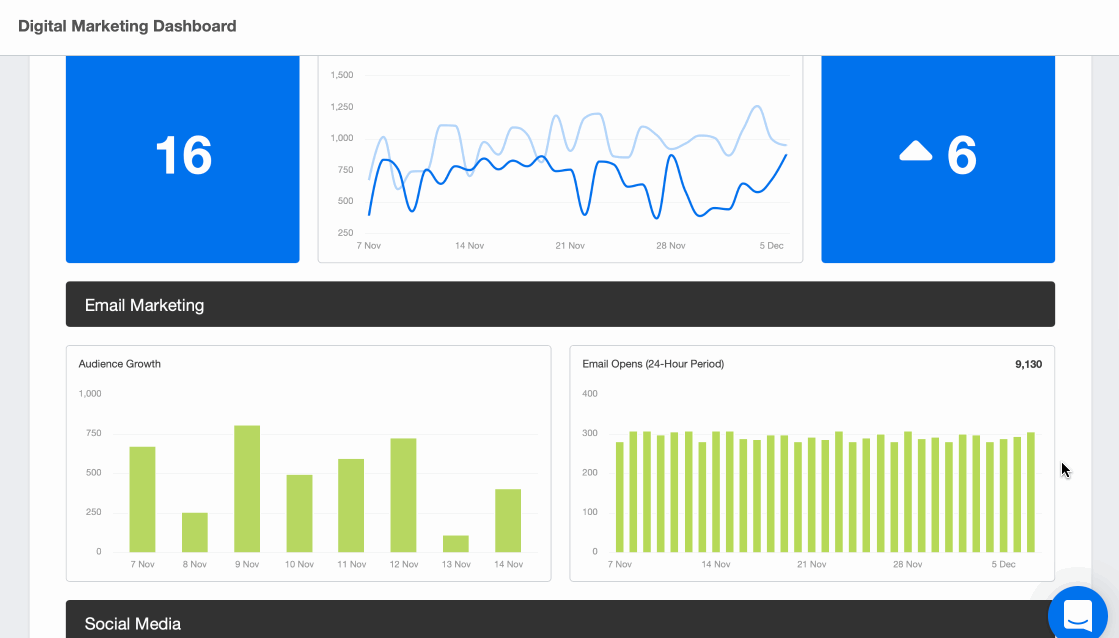
Using tools like AgencyAnalytics helps you keep track of all of your marketing channels in one place. Monitor important metrics and KPIs such as click-through rates, and website traffic. Start your free 14-day trial today.
13. Sales Team Training
There are many ways to boost your team’s performance, from improving internal processes to avoiding agency productivity killers.
However, if your sales team isn’t up-to-date on the latest marketing trends, strategies, and techniques, it could negatively impact your closing (and retention) rates.
After all, imagine a potential client asking, “How will you use ChatGPT in my marketing content?” and your sales rep has never even heard of ChatGPT or any AI data analysis tools. This is not only embarrassing but also makes your agency look a bit outdated.
Staying up-to-date also applies to the industry your agency serves. For example, if you specialize in eCommerce marketing and you don’t know what messaging, content, or latest trends are resonating with their specific customers, you may be missing the mark completely with their eCommerce analytics metrics to track. This has the potential to cost you new sales and even your existing clients.
To optimize their customer acquisition cost and fuel their long-term growth, digital marketing agencies should focus on customer value, use data-driven insights, experiment and innovate, and foster a culture of continuous learning. By adopting these strategies and continually refining their approach, agencies can reduce CAC, maximize ROI, and stay ahead of the curve in an ever-evolving digital landscape.
Adam Binder, Founder and CEO of Creative Click Media
14. Reduce Unnecessary Costs
This seems like an obvious suggestion; however, it’s somewhat overlooked. There may be areas where your agency is spending money or resources on unnecessary activities.
Now is the time to circle back to that list of the costs involved in acquiring customers and look for opportunities to trim the fat. For example:
Advertising Costs: Are there campaigns or channels that are draining budget and resources but are not performing? Consider shutting them down or–at the very least–adjusting the targeting so that they are as narrow and focused as possible.
Software Tools and Tech: Regularly check your agency’s marketing tech stack to ensure you’re not paying for a subscription you no longer need.
Salaries and Commissions: These need to be earned, so it may be time to review the compensation plan for account reps to ensure they are fairly compensated for their efforts but not overly compensated for deals they did not influence.
Wasted Leads: If leads are being generated and then left to cool off in someone’s inbox, clean up those processes so that hot leads are responded to in a timely (and complete) manner.
Customer acquisition cost is not a vanity metric. This is where the rubber meets the road. CTR, CPC, CPM, CPL... these are all good to track, but what really matters is how much it's costing you to acquire a new customer. More than marketing goes into this number, too though, so don't be fooled. Processes play a big role in closing business.
Nick Laiuppa, Owner, Nick Laiuppa Marketing
15. Measure and Track Your Progress
Accurate tracking and reporting of marketing and sales activities help your agency identify which marketing efforts are working and which are not. This also helps you to optimize marketing and sales strategies over time, steadily lowering your customer acquisition cost.
We think James Shaw says it best:
You can't improve what you aren't measuring. Get cozy with spreadsheet tools. Set up your systems to measure all steps of the process. Agencies need to drink their own medicine. If we track CAC and ultimately ROI of every marketing dollar for our clients, we should do the same for ourselves. How? Be your own client; use all the same systems and expertise.
James Shaw, Creative Director/Founding Director of Twin Creek Media
The Takeaway
To fuel the growth of your marketing agency, one thing is clear: you need more paying customers. But here's the reality check: new customers won't magically appear unless you put yourself out there with cost-effective marketing.
By analyzing and optimizing your customer acquisition cost, you uncover insights into the most effective avenues to invest your resources, ensuring you acquire new customers in the smartest and most efficient way possible.
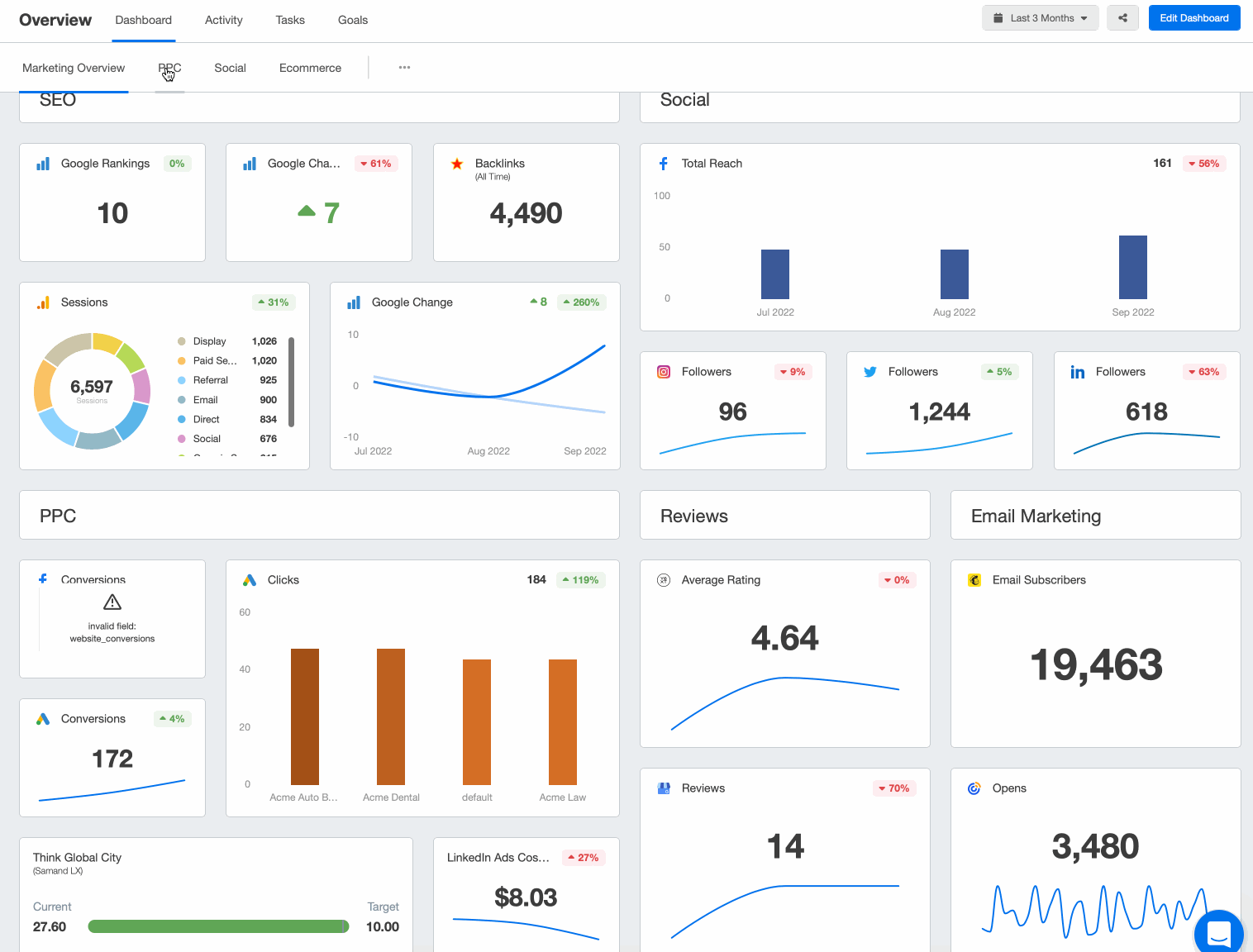
Gain clarity and insight into all of your marketing efforts in one place. With 80+ integrations and counting, AgencyAnalytics is used by more than 7,000 agencies. Streamline your clients’ marketing strategies and communicate your success to keep them in the long run. Get started with your free 14-day trial today.

Written by
Richelle Peace is a writer with a degree in Journalism who focuses on web content, blog posts, and social media. She enjoys learning about different topics and sharing that knowledge with others. When she isn’t writing, Richelle spends time teaching yoga, where she combines mindfulness, movement, and her passion for wellness.
Read more posts by Richelle PeaceSee how 7,000+ marketing agencies help clients win
Free 14-day trial. No credit card required.



